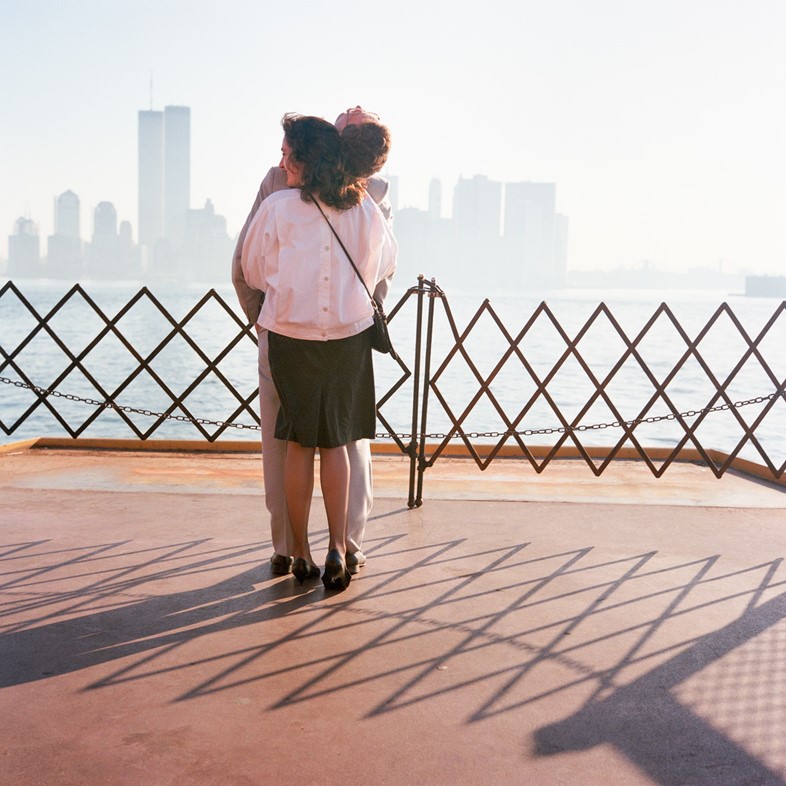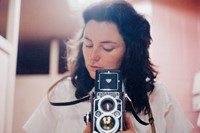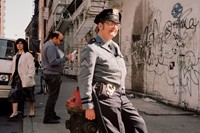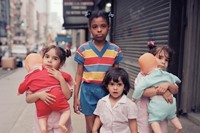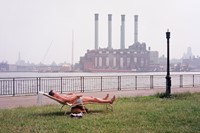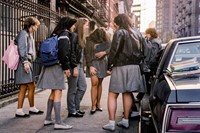In Janet Delaney’s cinematic new book, Red Eye to New York, the photographer explores the intimacy and isolation of big-city life in the 1980s
In the 1980s, LA-born image-maker Janet Delaney was balancing a multitude of different jobs. Based out of San Francisco, she would work days at a local photo laboratory, while also taking shifts as an editorial photographer for a non-profit, and creating her own political photo projects around Central America. In the evenings, she would teach at a night college in the South Bay. “I was trying to patch together a living,” she remembers today.
Delaney would also, when the opportunity arose, take long-distance courier shifts for DHL. Although undeniably busy with her photography work, it provided a surreal but welcome change of pace, as well as an opportunity for free air travel (a more exclusive luxury at the time). If a last-minute package needed delivering to New York, Delaney would grab at the chance to transport it across the country. “I just had to show up, pick up my free ticket and get on the flight,” she tells AnOther. “I would just get my carry on and take off.”
The photographer would travel on the red-eye flight, leaving at midnight and arriving on the east coast in the early hours of the morning. After delivering her package, she would wander the streets in a sleep-deprived daze, taking shots of local New Yorkers on her Rolleiflex camera. They were days of dreamy, cinematic escapism for Delaney: the majority of her work up to that point had been more urgent and politically charged, focused on impoverished neighbourhoods (like SoMa, in San Francisco) and state corruption (in Nicaragua). In New York, however, she got to try a calmer, more intimate kind of photography.
“For the most part, my photography projects are inspired by the larger socioeconomic conditions that we live in,” she says. “I’m engaged with the conversation of the whole community.” Because of the political potency of her other projects, Delaney viewed her work in New York as less important. It was only 40 years later, when Mack Books founder Michael Mack began encouraging her to look in her archive, that she began to reconsider the images. The result is the newly published Red Eye to New York: a serene collection of images that explore both the isolation, as well as the tender everyday intimacy, of big city life.
“I was born and raised in LA, but I moved to San Francisco in 1971. I would plot and plan to move to New York, but it was hard. Cities in general were really suffering during the 1970s: London had a lot of people living in abandoned buildings, and New York had a lot of heroin addiction. If you didn’t come to the city with a lot of money, you really would be right in the street.
“New York is one of the most intense places ever, because everything seems possible if you just work a little harder. It’s an incredibly competitive environment. But I love being there because it’s so alive. It was magical for me – probably because I didn’t have to live there and I wasn't trying to make a living. I could just find the subway, get in the car, get home, recover, then go back again. At the end of the day, I realised I was a westerner: I didn’t have the chutzpah to acclimate to New York City. I wasn’t able to withstand the intensity of it, so I always retreated back to San Francisco.
“I would regularly get the red-eye flights because they were the least expensive. The problem is they were too short a flight to actually get a good night’s sleep. I would leave San Francisco at midnight and get to New York four hours later, at 7am local time. I was quite adrift in my own pace.
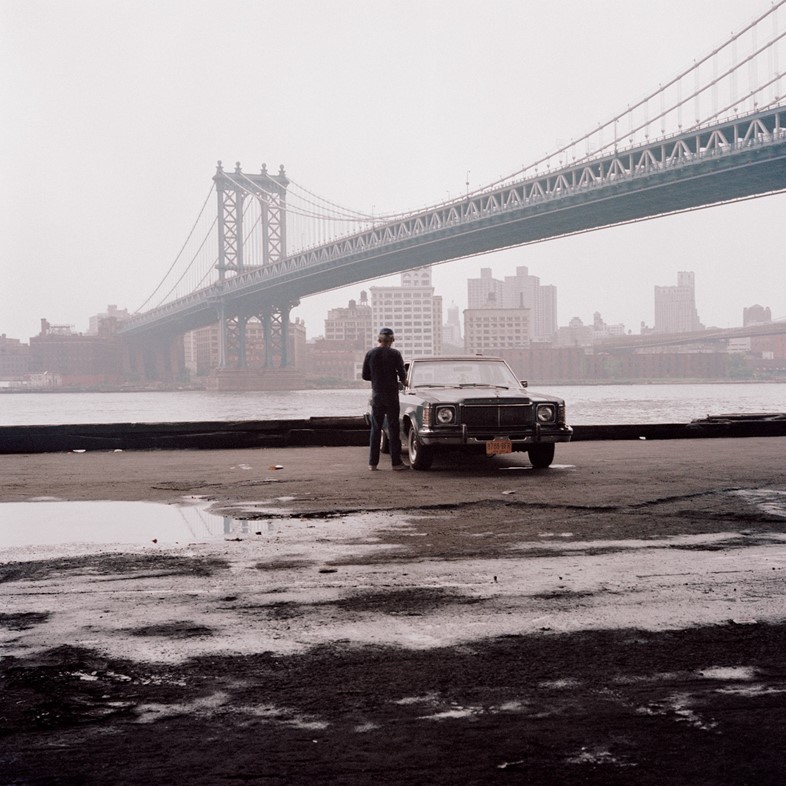
“My friend was living in Seaport, by the east river, so I would usually stay with her and just kind of wander the streets. I was photographing isolation because I was lonely myself, so I guess I was looking at other people by themselves. I was also shooting with a Rolleiflex camera so it was pretty quiet and pensive. It wasn’t like fast and furious 35-millimetre street photography, which is often associated with a more energetic perspective. It was slow: slow walks, kind of like picking up like rocks on the beach.
“I think the thing that was most unique for me was how public people were. In New York, there were people living their private lives in public space. There was a kind of intimacy on the streets of the city and, having grown up in LA where you're encased in a car, you don’t really experience that kind of proximity to other people. But in a big urban city, you’re bumping into people, getting close, seeing them crying, laughing. It feels more intimate even though you’re surrounded by strangers. Having grown up without that, I was really drawn to that unexpected public incident where you’re not controlling your environment so much. When you grow up inside a car, other than the horrors of an accident, you’re pretty insulated.
“It’s been 40 years since I did this work and I am finding people’s response to it very powerful. For those of us who lived through the 1980s, these pictures can really elicit a deep response. For people who were never there, they are moved by being able to visit it in a certain way. Right from the beginning, even when I was quite young, I had had a big affection for photographing and for looking at old photographs of the past. I really understood their power to help us stay connected with another time. And in some ways that still informs my current work, because I’m using the camera to gather up the present time for future reflection. It’s not with a neutral eye; it's with my own personal perspective. I have the perspective of a historian with a dash of poetry. Everything is framed. Everything is translated through the medium in some way by the author.”
Red Eye to New York by Janet Delaney is available now on MACK BOOKS
